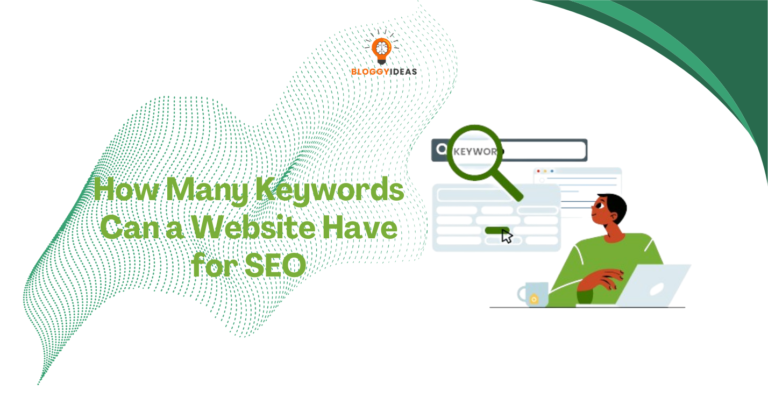SEO vs SEM: How Do They Work Together
“Quick Overview” If you’re engaged in digital marketing, you’ve likely encountered the terms SEO and SEM. But have you ever pondered their significance and function?
Think of digital marketing as a family, where SEM and SEO are distinct members among many.
Despite sharing the same family, SEM and SEO serve distinct purposes. But before delving into that, let’s define digital marketing and its significance for businesses.
Importance of Digital Marketing For Businesses
In the modern era of technology, digital marketing has become indispensable for a company’s success. Its importance lies in its ability to engage with a diverse online audience, enabling firms to connect with potential clients in a targeted and cost-effective manner.
Digital marketing empowers companies to enhance their online visibility, boost website traffic, and ultimately drive sales and revenue through strategies such as search engine optimization (SEO), social media marketing, email campaigns, and pay-per-click advertising.
Moreover, it provides valuable data and analytics tools for companies to monitor and evaluate the effectiveness of their marketing efforts, facilitating data-driven decision-making for sustained growth.
Another key aspect of digital marketing is its adaptability to market changes. Leveraging real-time data and customer feedback, businesses can swiftly adjust their tactics to remain competitive and relevant in the ever-evolving digital landscape.
In essence, digital marketing is not merely an option for organizations; it’s a necessity. It lays the groundwork for expansion, fosters brand recognition and affinity, and enables personalized interactions with customers.
Businesses that embrace digital marketing not only survive but thrive in the digital age, where online presence and customer engagement are paramount to success.
What is SEO?
SEO, a vital component of the digital marketing realm, known as search engine optimization, enhances your website’s visibility and boosts its ranking on search engines.
By leveraging SEO to optimize your website with unique and informative content, you can increase traffic and facilitate your target audience’s discovery of your product or service.
Strategic campaign planning is facilitated by SEO, as it involves crafting valuable content that resonates with readers.
While most of us are familiar with SEO, did you know there are various SEO practices that can further elevate your success?
Let’s delve into them!
Understanding the Various Types of SEO Practices & Strategies
1. On-Page SEO
On-page SEO entails effectively enhancing various components of a website to improve its performance in search engine results pages. It combines technical SEO and content optimization, meticulously evaluating elements such as website titles, links, content, and more.
When crafting website content, the primary aim is to offer relevant information using keywords frequently searched by the audience. Keyword optimization is crucial for boosting organic traffic.
Providing an excellent user experience is another vital factor for driving traffic. Just as you wouldn’t want to wait for hours for a website to load, neither do your readers. Websites that load quickly tend to have higher user retention rates. If your website is slow, address the issue promptly.
On-page SEO is an ongoing process of assessing and adjusting content to provide valuable information to customers. It also involves consistently strategizing to improve website ranking and visibility in search engine results.
2. OFF Page SEO
Another aspect of SEO is OFF-page SEO, involving actions taken external to your website to enhance visibility and boost rankings on search engine result pages.
It encompasses a variety of strategies aimed at establishing a robust digital presence within the industry. The primary objective of OFF-page SEO is to secure high-quality backlinks from reputable websites, as search engines like Google view these backlinks as affirmations of your site’s content and relevance. The greater the number of high-quality backlinks your website garners, the higher its likelihood of ranking well in search engine results pages (SERPs).
OFF-page SEO also encompasses social media marketing, content marketing, influencer outreach, online reputation management, and other promotional endeavors that contribute to a website’s credibility and trustworthiness in the eyes of search engines and users alike.
Effective OFF-page SEO can drive an increase in organic traffic, enhance your website’s digital authority, and result in improved search engine rankings, leading to greater organic traffic and potential customer acquisition. It constitutes a vital element of a comprehensive SEO strategy geared toward enhancing your website’s overall online presence and competitiveness.
3. Technical SEO
Technical SEO is a branch of search engine optimization (SEO) that concentrates on refining the technical features of a website to enhance its visibility and performance in search engine results pages (SERPs).
It addresses the foundational structure and functionality of a website. This aspect is crucial because even top-quality content may struggle to rank if the technical foundation is lacking.
Improving your website entails various elements, such as boosting loading speed, ensuring mobile compatibility, enhancing search engine discoverability (crawlability), and establishing a well-structured and organized layout.
These factors collectively work to optimize the efficiency and user-friendliness of your website, ultimately elevating its overall performance and user experience.
Unlocking the Power & Purpose of SEO
Now that we’ve covered various SEO practices, let’s delve into why they’re crucial.
Search Engine Optimization (SEO) stands as a vital digital marketing strategy aimed at enhancing a website’s visibility and ranking in search engine results pages (SERPs). Its primary objective is to augment the organic (non-paid) traffic a website receives by optimizing different aspects to align with search engine algorithms. SEO encompasses both on-page and off-page optimization techniques.
On-page SEO entails optimizing content, meta tags, headers, and other on-site elements to increase their relevance and appeal to search engines. Off-page SEO, on the other hand, focuses on building high-quality backlinks from reputable websites, thereby establishing a site’s authority and credibility in the eyes of search engines.
By addressing the preferences and requirements of search engines, SEO facilitates effective connection between websites and their target market, providing users with valuable information and improving the overall user experience.
In essence, SEO strives to drive organic traffic, enhance online visibility, and elevate websites’ overall performance and success in the digital realm.
How Does SEO Work
SEO encompasses optimizing different elements of a website, such as its content, structure, and HTML code, to enhance its attractiveness and relevance to search engines like Google.
Key SEO components comprise on-page optimization, which fine-tunes the website’s pages, and off-page optimization, which focuses on building high-quality backlinks from reputable websites. Additionally, keyword research identifies relevant keywords and strategically incorporates them into the content, meta tags, and headers.
SEO also takes into account user experience, site speed, and mobile-friendliness, as search engines prioritize these factors in ranking determinations.
The Astonishing Benefits of SEO
After grasping the concepts of SEO, including its types, functionality, and objectives, let’s outline the primary advantages of employing SEO.
With an effective strategy, you can enhance sales, raise consumer awareness, and attain the desired objectives to propel your business forward.
Let’s look at some of the benefits of using SEO below.
- Generate Quality Leads: By optimizing SEO tactics, you can enhance organic traffic to your web pages, boosting sales and brand awareness through lead generation. When your website ranks higher in search engine result pages, it becomes easier for your target audience to discover your business and its offerings.
- Increase Brand Visibility: The ability to appear at the top of search results indicates the effectiveness of your keyword strategy to people in your ideal customer base. The more frequently you appear in search results, the more visible your brand becomes, expanding your customer base.
- Build Brand Credibility & Trust: Ranking high in Google search results through SEO signifies the relevance of your website’s information, establishing your brand as a valuable resource. This enhances credibility and fosters trust among users and Google alike.
- Source of Traffic Generation: SEO’s capability to attract a significant audience is one of its primary benefits. By employing specific SEO techniques, your website can become the top choice for products and services users are searching for, enabling you to direct more qualified leads to your site.
- Cost-Effectiveness: Compared to paid ads, SEO is a long-term investment that yields returns once your website is optimized. It’s one of the most cost-effective strategies, generating high-quality leads at a lower cost. This presents a cost-effective opportunity for startups and emerging companies to invest in top-notch SEO strategies for their industry.
SEO is considered a crucial element of your marketing strategy. It’s imperative to conduct thorough keyword research and fully optimize your website when crafting an SEO plan.
What is SEM
Search Engine Marketing (SEM) is a crucial component of digital marketing, primarily employed for paid advertising to attract viewers via platforms like Google, Bing, Yahoo, and others. However, it’s not as straightforward as it may seem. Before diving into SEM, several important factors merit consideration.
Conducting thorough research and formulating a strategic approach for your advertising endeavors is imperative. When leveraging SEM to enhance your online presence and gain visibility on search engines like Google, comprehending your competitors’ strategies is key. This is where competitor research plays a pivotal role.
What Does SEM Include
As mentioned earlier, SEO encompasses distinct features and characteristics. On the other hand, SEM includes PPC, Local Search Ads, Display Advertising, Shopping or product advertising, and Remarketing as its core components.
Marketers employ various strategies to enhance their presence on search engine result pages. These paid advertising strategies are tailored to your brand’s market and enable you to reach your intended audience.
SEM proves effective in terms of outcomes as it leverages PPC marketing to generate revenue for each click, while also attracting a broader audience using locally relevant keywords.
Below are some types of SEM ads that help increase your brand visibility and offer additional benefits. Let’s delve deeper to understand them in detail.
PPC
PPC, or Pay-Per-Click, is a digital advertising model utilized by businesses and advertisers to promote their products and services online.
In a PPC advertising campaign, advertisers incur a fee each time a user clicks on one of their ads. This method enables businesses to purchase website visits rather than relying solely on organic traffic generated through search engine optimization (SEO) or other marketing tactics.
PPC advertising is highly targeted, allowing advertisers to select the audience for their ads based on keywords, demographics, location, and more. It provides a measurable and controllable means of reaching potential customers and can serve as an effective component of a comprehensive digital marketing strategy.
Local Search Ads
Local search advertisements, offered primarily by search engines like Google, are a form of online advertising tailored to help businesses promote their products or services to nearby consumers actively seeking relevant offerings in their vicinity.
Local Search Ads serve as a crucial tool for businesses dependent on local clientele, such as brick-and-mortar stores, restaurants, healthcare providers, and service-based enterprises. They enable effective outreach to potential customers actively searching for products or services nearby.
These ads facilitate the connection between local businesses and nearby consumers, ultimately driving foot traffic and online conversions.
Display Advertising
Have you ever stumbled upon a website and noticed an image or video that closely matched what you were seeking? That’s known as Display Advertisements.
Display ads, also called “display advertisements,” are a form of online advertising that utilizes visual elements such as images, graphics, and videos to promote products, services, brands, or messages across websites, social media platforms, mobile apps, and other digital platforms. These ads come in various formats and sizes, including banners, sidebar ads, pop-ups, interstitials, and more.
Display advertising is a prevalent digital marketing strategy because it enables advertisers to visually showcase their offerings to a broader target audience, tailored to their objectives and budget. It’s a crucial component of many online marketing campaigns, working in tandem with other channels like search engine marketing (SEM), social media advertising, and email marketing.
Shopping or Product Advertising
Shopping or product advertising involves strategically marketing and selling specific goods or services to the target audience on e-commerce platforms. To capture potential customers’ interest and influence their purchasing decisions, it requires creating compelling messaging and utilizing various marketing channels.
Here are some crucial components of retail or product advertising:
- Product Promotion: Product advertising aims to generate interest and recognition for a specific service or product. It often highlights the product’s characteristics such as design, usability, quality, cost, and other features.
- Target Audience: Advertisers tailor content for shopping or product advertisements to their target audience. They comprehend the lifestyles, interests, and purchasing behaviors of potential customers to craft ad content accordingly.
- Visual and Creative Elements: Effective product advertising incorporates visual elements like images or videos to showcase the product in action. Utilizing creative language and storytelling can also enhance consumer engagement and product appeal.
- Call to Action (CTA): Product commercials frequently include a call to action prompting viewers to take specific actions, such as making a purchase, visiting a website, or contacting the relevant person.
- Competitive Differentiation: In competitive markets, product advertising often highlights what sets the marketed product apart from rivals in terms of features, quality, or pricing.
- Branding: While the product takes center stage, product promotion can also contribute to building the entire brand. Positive customer experiences, such as excellent service, high-quality products, competitive pricing, and overall satisfying interactions, foster brand loyalty and repeat purchases.
- Measurement and Analytics: Advertisers utilize various metrics and analytics tools to assess the effectiveness of their product advertising campaigns. These metrics include sales data, website traffic, click-through rates, and customer feedback.
Remarketing
Remarketing is a digital marketing strategy targeting users who have previously interacted with your website, app, or brand but haven’t taken the desired action. Its goal is to re-engage these visitors and encourage them to complete specific actions, such as making a purchase, subscribing to a newsletter, or achieving other conversion objectives.
Unlocking the Power & Purpose of SEM
The objective of SEM is straightforward. While SEO focuses on attracting website visitors organically, SEM targets a broader audience to boost sales by paying for high rankings. This encourages customers to explore your brand and its offerings further.
Now, how do we achieve this?
There are several ways to fulfill the purpose of SEM. They are listed below:
Keyword Research
Effective keyword research is crucial for a successful campaign as it ensures targeting the right audience searching for similar keywords, thereby increasing your website’s visibility on search engine results pages.
Campaign Structure
Campaign structure refers to the organized framework and hierarchy that businesses and marketers use to plan, manage, and execute their marketing and advertising efforts across different channels. It offers a systematic approach to organizing and optimizing marketing campaigns to achieve specific goals and objectives.
Campaign structure holds particular significance in digital marketing, where multiple channels, platforms, and strategies are often utilized simultaneously. The structure of a campaign can vary depending on its purpose, industry, and target audience.
Irrespective of the campaign type, a well-organized and strategic approach is essential for attaining desired outcomes and maximizing return on investment.
Budgeting
Establishing a budget is vital for any campaign to prevent overspending and to maximize the utilization of allocated funds.
Monitoring and Analysis
Regularly monitoring the progress of your campaign is critical to ensure alignment with your strategic plan and achievement of overarching goals. By closely tracking its performance, you can make timely adjustments, optimize resources, and address any arising issues, ultimately enhancing the likelihood of success.
Continuous monitoring and adaptability are pivotal in effectively managing and steering your campaign toward the intended objective. Key performance indicators can be monitored using analytical tools such as CTR, CPC, and other relevant metrics across various advertising platforms.
How Does SEM Work
SEM can prove highly effective in driving targeted traffic to your website and achieving specific marketing objectives. However, success requires thorough preparation, ongoing monitoring, and a dedicated budget for paid advertising.
The initial step in this process is identifying keywords commonly used by potential customers when searching for the products or services they require. Advertisers then purchase ad space for these terms on search engine platforms.
Pay-per-click (PPC) advertising operates on a payment model where advertisers compensate the search engine provider for each click on their ad. This approach ensures that the advertiser’s content is displayed to individuals actively seeking relevant information or products, making it a precise and efficient marketing tactic.
To maintain the success of your SEM campaigns, it’s crucial to stay abreast of changes in search engine algorithms and advertising platforms.
The Astonishing Benefits of SEM
Search Engine Marketing (SEM) provides numerous advantages for businesses. Firstly, it allows companies to precisely target individuals through ad campaigns using popular and relevant keywords.
The likelihood of conversions rises with targeted ads shown to prospective customers actively seeking goods or services.
Businesses have the optimal opportunity to capture potential consumers’ attention at the right moment in their buying journey when the ads prominently appear in search results upon a user entering a matching search query for the keywords in an SEM campaign.
This speed and relevance result in a higher conversion rate compared to many other marketing channels.
How SEO and SEM Complement Each Other
SEO and SEM represent two distinct approaches to ensure your website ranks highly on Google search results when users look for information. Both methods aim to drive more traffic to your website.
Think of it this way: Imagine you own a store and wish to attract numerous customers to purchase your products. SEO and SEM serve as tools to draw visitors to your store.
SEO (Search Engine Optimization): Comparable to enhancing the appearance and organization of your store to entice passersby. This involves tactics like using relevant keywords on your website, producing top-notch content, and securing backlinks from other sites. These efforts enhance your website’s visibility in Google search results without requiring payment for ads.
SEM (Search Engine Marketing): Similar to erecting a prominent sign outside your store with a special promotion to entice customers. Here, you pay Google to display your website prominently in search results when users search for specific keywords. While this approach garners quick attention and attracts customers, it necessitates payment.
Despite their differences, both SEO and SEM share the common goal of achieving desired outcomes.
Comprehensive Search Visibility
To ensure your digital presence is easily discoverable across various search engines and platforms, improving overall search visibility demands a comprehensive strategy.
Firstly, optimizing your website for search engines (SEO) is crucial. This involves conducting thorough keyword research to identify relevant terms and phrases your target audience will search for online. Strategically integrate these keywords into your website’s content, meta descriptions, and headings.
Moreover, focus on creating engaging, informative content that resonates with both your audience and search engines. Ensure your website is mobile-friendly, loads quickly, and maintains technical integrity to deliver a seamless user experience.
Enhancing user experience and site structure, along with acquiring high-quality backlinks from reputable websites, will significantly enhance search results.
Furthermore, don’t overlook the significance of a robust presence on social media and other online platforms. Consistently share and promote your content across social media channels to build a loyal following and engagement, driving traffic back to your website.
Leveraging paid advertising, such as Google Ads, and utilizing the benefits of email marketing campaigns can further boost your visibility in search results. Regularly assessing your progress, making data-driven decisions, and adjusting your strategy over time using analytics tools to monitor performance are crucial.
By combining these strategies and staying abreast of the latest SEO trends and algorithm updates, you can improve your overall search visibility and broaden your reach to a wider online audience.
Faster Results
Integrating SEO and SEM can expedite results in multiple ways. SEM delivers swift traffic and leads, while SEO focuses on gradual, organic growth. To leverage the benefits of both, it’s crucial to blend these techniques, exchange insights, and consistently refine your digital marketing strategy.
By harnessing the synergy of SEO and SEM, websites can anticipate a broader target audience, resulting in enhanced reach and an exceptional user experience, thereby accelerating outcomes.
Getting More Data Synergy and Insights
SEO and SEM complement each other effectively, providing valuable information and insights that can enhance both strategies. By leveraging the synergy between these two methods, you can develop a more robust and successful digital marketing strategy.
To achieve results, brands must strike a balance between SEO and SEM. This ensures websites rank higher, attract more user attention, and make full use of a variety of powerful SEO tools to maximize growth.
Increase CTR
By conducting thorough keyword research, crafting compelling and relevant meta descriptions and titles, producing high-quality and engaging content, incorporating negative keywords to refine targeting, leveraging ad extensions for added information, and employing various other SEO and SEM strategies, you can enhance Click Through Rates and achieve your desired objectives.
It’s crucial to monitor and assess performance metrics regularly. Regularly review CTR data, monitor adjustments, and make necessary refinements to continually improve CTR rates. Optimizing for CTR is just one aspect of a comprehensive digital marketing strategy; SEO and SEM efforts require ongoing attention.
Create a Strong Brand Presence
Integrating SEO and SEM can bolster your brand and elevate your online visibility. SEM provides the opportunity to maintain brand uniformity across multiple channels, granting full control over advertising content and graphics. Meanwhile, SEO fosters a dependable digital identity that enhances brand promotion and credibility.
This strategic fusion can enhance your online visibility, ensure brand coherence, leverage data efficiently, and achieve both short-term and long-term marketing goals. By merging SEO and SEM, you can cultivate a robust and enduring brand presence in the fiercely competitive digital landscape.
Maximizing Keyword Coverage
SEM allows for a rapid expansion of keyword coverage, while SEO typically focuses on a core set of keywords. With SEM, you can bid on a wider array of keywords, including long-tail and highly competitive ones that might be difficult to rank for organically in the short term.
By maximizing your keyword coverage, boosting online visibility, and driving targeted traffic to your website, you can develop a comprehensive search engine marketing plan that delivers optimal results for your company. This can be achieved by leveraging the advantages of both strategies and sharing insights between them.
For new brands operating on a limited marketing budget, leveraging SEO can help connect with a broader audience. By targeting as many keywords as possible, you can organically grow your business and increase website traffic over time.
Frequently Asked Questions (FAQs)
1. How Can I Optimize My Website for Both SEO and SEM?
While SEO focuses on prioritizing crucial keywords to rank first, SEM requires attention to other elements of the paid process. To boost website traffic, SEM should capitalize on keywords that aren’t generating organic traffic.
2. Do SEO and SEM Strategies Require Different Keyword Research Approaches?
To maximize online presence in search results, SEO tactics typically target specific audiences and demographics. SEM tactics focus on click-through rates, average PPC, and Google Analytics data to gauge success and further engage the target audience.
3. Is It Possible to Track the Performance of SEO and SEM Campaigns Separately?
Tracking performance is crucial, whether using paid advertising or organic methods to attract customers. Various methods like top query analytics, page metrics, and click-through rates can monitor success and allow for optimization.
4. Do SEO and SEM Strategies Vary Across Different Industries and Niches?
Industries vary significantly, each with unique challenges and competitors vying for top rankings. Tailoring a niche-specific marketing plan is essential to stand out and succeed.
5. Are There Any Common Misconceptions or Myths About Using SEO and SEM Together?
Misconceptions abound, such as the belief that using SEM methods affects SEO, or that higher traffic automatically equals success. Focus on enhancing brand value with unique advertising techniques suited to your company rather than falling for such assumptions.
6. Can Small Businesses Benefit From Implementing Both SEO and SEM Strategies?
Integrating SEO and SEM into small business strategies can drive high-quality traffic and attract potential consumers to the website. This approach may also boost rankings and elevate the brand’s market value.
Conclusion
As technology continues to evolve, the marketing sector will witness numerous advancements. Staying abreast of these developments relies on how your target audience perceives your brand.
As vital elements of a marketing strategy, SEO and SEM consistently contribute to boosting organic traffic, optimizing paid advertisements, and fostering brand awareness among the target audience.
Related Resources:







